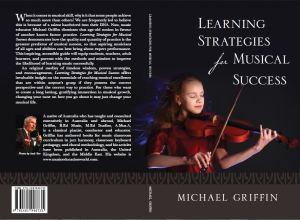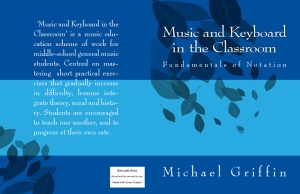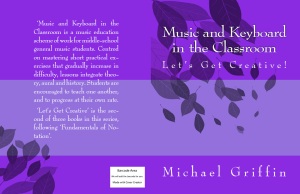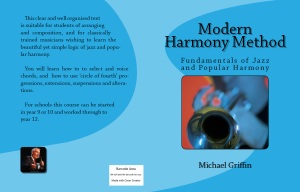The brain is divided into two cerebral hemispheres. The left hemisphere controls the ability to speak, read, and write. However, the right hemisphere is responsible for the musical elements of speech, including intonation, prosody, emphasis, and pitch. Musical processing is even more widely distributed throughout the brain than is speech. Pitch, melody, harmony, and structure tend to be right hemispheric, whereas time structures such as meter, rhythm, and tempo are mainly left hemispheric. The brain processes the emotional response to music mainly in the limbic system and the frontal lobes.
British music educator George Odam says, “Real musical experience should focus on sound rather than symbol so that the sound processors in the right hemisphere can be activated”. Reading music, analysis, and intellectualization are all primarily left-hemispheric activities. Unlike formally trained musicians, non-musicians are restricted to emotional response when listening to music and hence activate less of the left hemisphere during listening activity. Music education, then, appears to shift music processing from the right to the left hemisphere. Hence, one of the benefits of having a formal musical education is that more of the brain is activated during listening. The cerebral hemispheres are sometimes referred to as ‘logic’ instead of left and “gestalt” instead of right, because in some people the two are transposed. ‘Gestalt’ refers to seeing the big picture or perceiving one’s environment holistically.
Numerous reports recommend making music as a means of keeping the mind sharp. American neuroscientist Gregory Berns certainly thinks so. Speaking on the BBC’s The Big Idea, Berns had sixty seconds to present one idea that would change the world for the better. “Everyone should learn to play music,” said Berns. He explained:
It does not matter whether you have talent or if you think you’re tone deaf—the simple act of producing a rhythmic or harmonious statement teaches us skills that so often fall by the wayside in modern life. Apart from developing communication skills, making music helps us to listen to each other. It is impossible to make music with other people without listening to your fellow musicians. Making music also develops motor skills. It develops parts of the brain that would otherwise not be used. But most importantly it feels good.”
An excerpt from ‘Learning Strategies for Musical Success’ by Michael Griffin
“A must read for all music educators” – Robert Adams, New Haven, USA.
“Super book. I am so impressed!” – Donna Michaels, USA
“Fantastic book, simply brilliant! – Ian Cooper, Norfolk, UK
“Don’t miss this opportunity!” – Mary George, USA
“Rarely do I come away feeling so inspired. Incredibly beneficial.” – Music Matters Blog
“Such a practical book. SO glad I purchased this. – Jocelyn Beath, NZ
“Most stimulating!” – Nicholas Carpenter, Prebendal, UK
“A must buy for every music teacher and music student” – William Bruce, Teacher of Strings, UK.
“Deeply impressive, the breadth of research is fascinating!” – Robert Chamberlain, Team of Pianists and Monash University Piano Staff, Victoria Australia.
“Awesome! I want to recommend it to every teacher I know” – Michael Williamson, Australia
“I loved it. Extremely helpful and inspiring!” – Cheryl Livingstone, Australia
“The best resource for music educators” – Andrew Heuzenroeder, Australia
“I have read your book and it has made an amazing difference in my teaching and in my studio.” Beth Cruickshank, Past President – Ontario Registered Music Teachers Association.
Amazon
Amazon UK
Kindle US
Kindle UK
Australia: Contact mdgriffin63@gmail.com for direct mail.
Also by Michael Griffin
Music and Keyboard in the Classroom: Fundamentals of Notation is a unit of work for general music middle school classes. Designed around the mastering of practical skills, it integrates theory, aural and history, and allows students to progress at their own rate. View Table of Contents. “This has been a great buy; the books are just superb! Interesting topics with a wide range of pieces. Great content with clear progression of learning. Fascinating teaching philosophy! BRAVO!” -The Grieg Academy, London. Available at Amazon.com
Music and Keyboard in the Classroom: Let’s Get Creative! is the fun and creative extension to ‘Fundamentals of Notation’.
View Table of Contents. “We have been using your keyboard course and the results have been amazing!” – St George College, Australia
Available at Amazon.com
‘Bumblebee: Rounds & Warm-ups for Choirs’
Bumblebee! is more than just a collection of 84 choir exercises and rounds. The author shares timeless wisdom to help you get your choir – primary or secondary – into shape.
View Table of Contents.
“This is really good for all kinds of vocal groups, choirs, conductors. Bravo!!”
“The thinking person’s guide to training a choir. Love it!”
“It’s great to have some fresh warm-ups to add to the repertory. The tips for actions and techniques are really useful, and the advice at the back of the book has made me review some of my strategies.”
Modern Harmony Method: Fundamentals of Jazz and Popular Harmony (Third Edition, 2013) is a clear and well organised text suitable for students of arranging and composition, and for classically trained musicians wishing to grasp the beautiful logic of jazz harmony. Essential understandings include chord selection, voicing, symbols, circle of 4th progressions, extensions, suspensions and alterations. Included in the 107 pages are explanations, examples, exercises and solutions. The course can be started with students in year 9 and worked through to year 12 musicianship, composing and arranging. Available at Amazon.com





Leave a comment